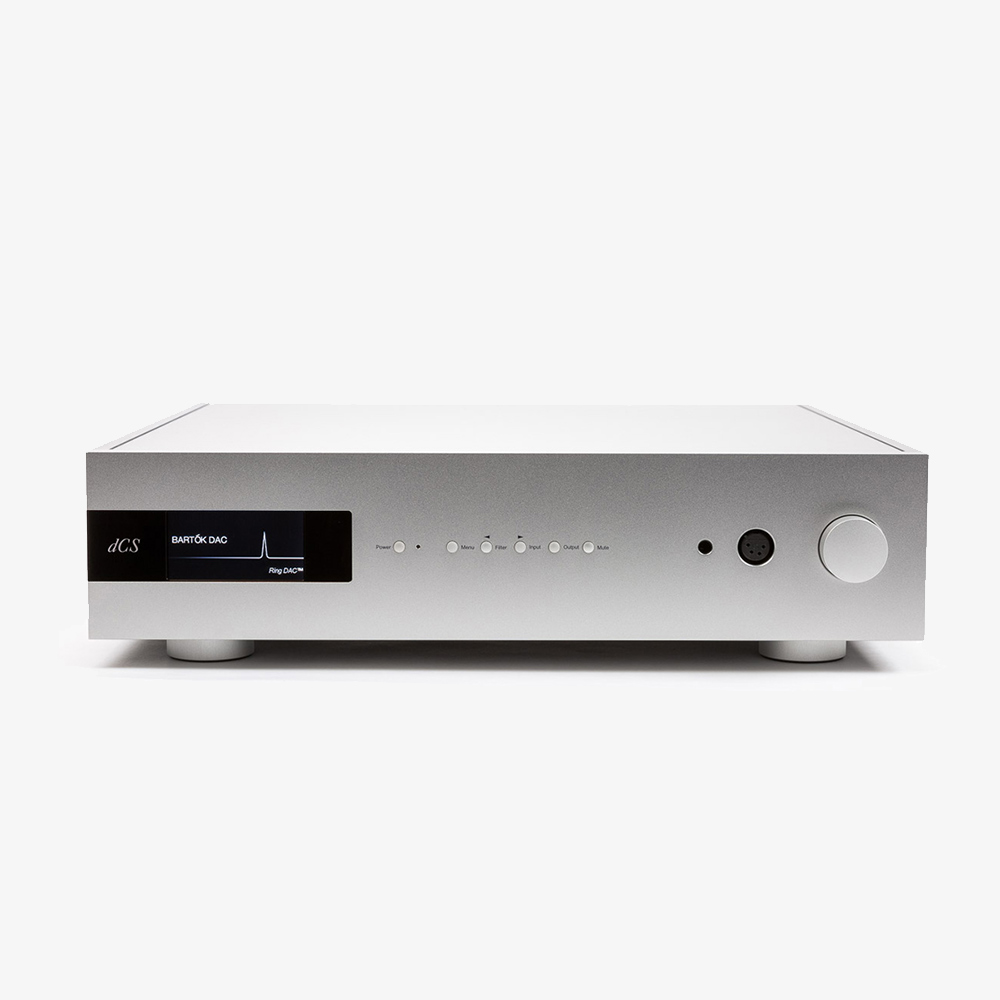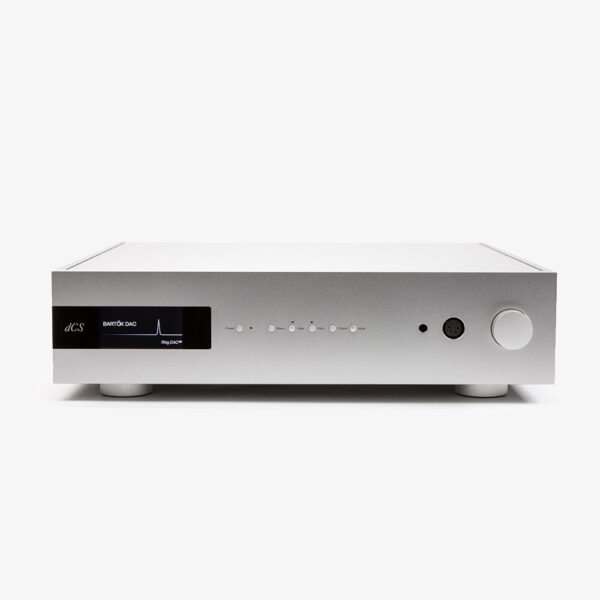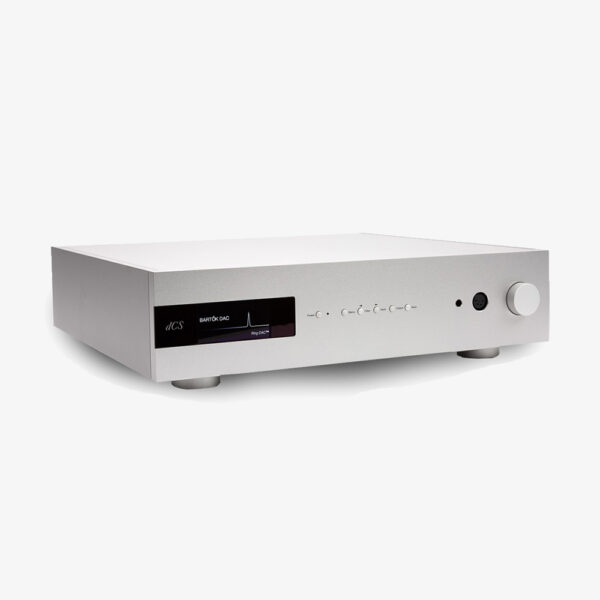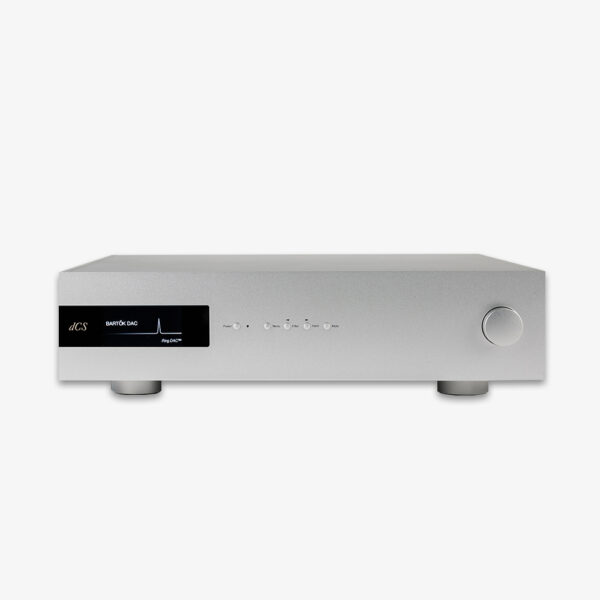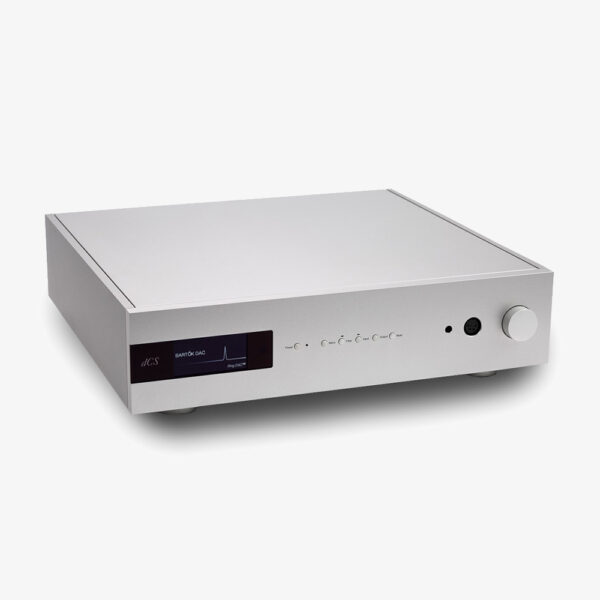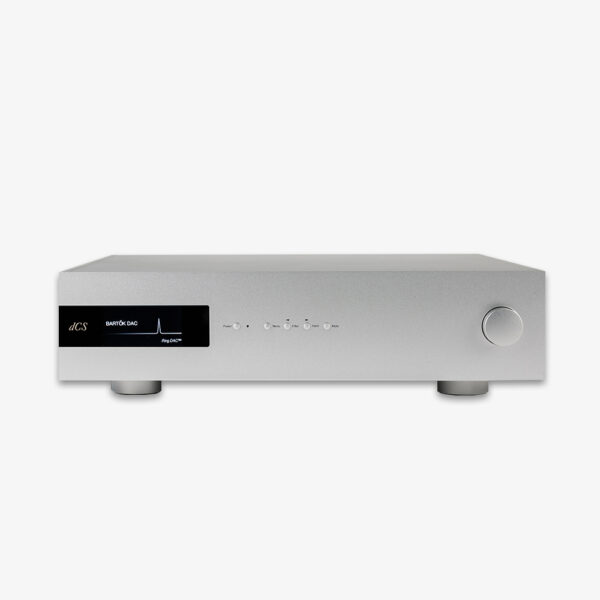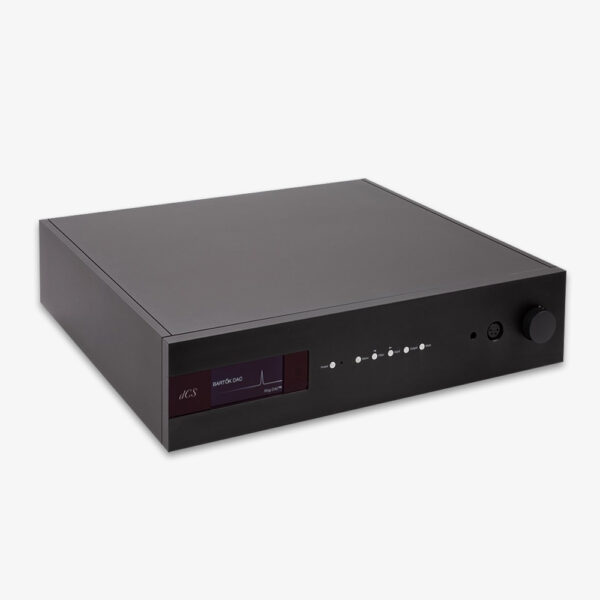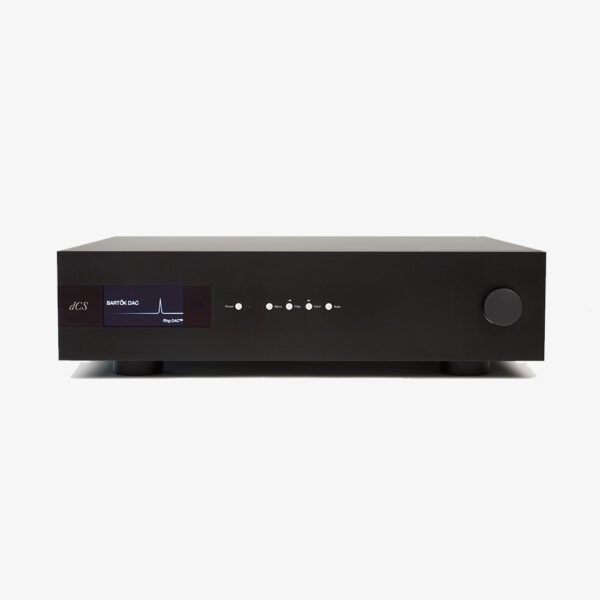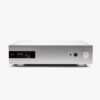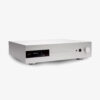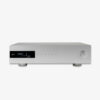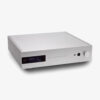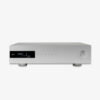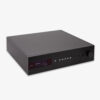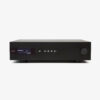Bartók APEX DAC / Headphone Amplifier
The dCS Bartók DAC brings together dCS’s past, present and future. It is first and foremost a state of the art network streaming DAC that uses technology developed for the Rossini range. With the addition of the unique headphone amplifier it brings the extraordinary dCS digital experience to both headphone and stereo listeners.
Description
This single-box digital music player features the legendary dCS Ring DAC™ and signal processing platform, plus a custom high performance UPnP music streamer.
Bartók plays music through an array of industry-standard USB, AES or S/PDIF digital inputs. It can stream over Ethernet from a NAS drive or online music services such as TIDAL™ or Spotify™, and from Apple devices via Airplay™. The network interface can perform full MQA™ decoding and rendering.
The Bartók is available in two versions. DAC and DAC with headphone amplifier. The DAC section is equipped with independent balanced and unbalanced line outputs that can drive power amplifiers directly, avoiding the need for a separate preamplifier. The Headphone DAC features a custom designed headphone amplifier that works extremely well with both high and low impedance headphones in balanced or unbalanced formats. All of the outputs can be set to one of 4 maximum levels to enhance system compatibility.
Designed for flexibility and ease of use without compromise, Bartók uses the very latest dCS Digital Processing Platform and Ring DAC™ technology, originally developed for the Rossini series. Its single FPGA offers streamlined signal processing and superior flexibility, effectively making it future-proof.
Bartók DAC has a powerful new user interface, plus a custom control app that lets listeners manage their music playback from any source in an elegantly simple way – accessing iRadio channels, digital and UPnP sources all from one control point. The Bartók app provides easy access to the DAC settings.
Featuring DXD upsampling as standard, the multi-stage oversampling design offers optional DSD upsampling plus an extensive selection of DSP filters to suit individual taste and music choice. The network streaming functionality within Bartók is proven in terms of jitter, ease of use and sonic performance. The network interface currently runs at up to 24-bit, 384kS/s and DSD128, supporting all major lossless codecs, plus DSD in DoP format and native DSD.
Bartók supports the simple yet highly effective dCS ‘auto clocking’ architecture as used in Vivaldi, which minimises jitter and improves sound quality significantly.
Designed and made in Great Britain to the highest standards, Bartók takes its design cues from the award winning Rossini range, using aerospace-grade machined aluminium with internal acoustic damping panels to reduce sound-degrading mechanical vibration and magnetic effects. Multi-stage power regulation is employed, with twin mains transformers to isolate the DAC circuitry from the headphone amplifier.
Product Specifications
Type
Upsampling Network DAC with Headphone Amplifier
Colour
Silver or Black
Dimensions
444mm / 17.5” x 430mm / 17.0” x 115mm / 4.6“. Allow extra depth for cable connectors.
Weight
16.7kg / 36.8lbs
Converter Type
dCS proprietary Ring DAC™ topology.
Digital Inputs
Network interface on an RJ45 connector – acts as a UPnP™ renderer in Asynchronous mode, streaming digital music from a NAS or local computer over a standard Ethernet network, decoding all major lossless formats including FLAC, WAV & AIFF at up to 24 bit 384kS/s native sample rate, plus DSD/64 & DSD/128 in DFF/DSF format. Other formats include WMA, ALAC, MP3, AAC & OGG. Some formats are limited to lower sample rates. Supports Apple AirPlay at 44.1 or 48kS/s. Network Loop Out connector on a second RJ45 connector. USB 2.0 interface on a B-type connector operating in Asynchronous mode, will accept up to 24 bit PCM at up to 384kS/s plus DSD/64 & DSD/128 in DoP format. Operates in Class 1 or 2 mode. USB-on-the-go interface on type A connector operating in Asynchronous mode, streams digital music from a flash drive at up to 24 bit 384kS/s plus DSD/64. 2x AES/EBU on 3-pin female XLR connectors. Each will accept PCM at up to 24 bit 192kS/s or DSD/128 in DoP format. Used as a Dual AES pair, it will accept PCM at up to 384kS/s, DSD/64 & DSD/128 in DoP format or dCS-encrypted DSD. 2x SPDIF on 1x RCA Phono and 1x BNC connectors. Each will accept PCM at up to 24 bit 192kS/s or DSD/64 in DoP format. 1x SPDIF optical on a Toslink connector will accept PCM at up to 24 bit 96kS/s
Analogue Outputs
Output levels: 0.2, 0.6, 2V or 6V rms for full-scale input, set in the menu. Balanced outputs: 1 stereo pair on 2x 3-pin XLR male connectors. These outputs are electronically balanced and floating. Output impedance is 3Ω, maximum load is 600Ω (10k-100kΩ is recommended). Unbalanced outputs: 1 stereo pair on 2x RCA phono connectors. Output impedance is 52Ω, maximum load is 600Ω (10k-100kΩ is recommended).
Headphone Outputs
1 stereo balanced pair on 1x 4-way male XLR connector. 1 stereo unbalanced pair on 1x 6.35mm (1/4”) 3-pole jack. Full-scale output levels are 1.4W rms into 33Ω, 0.15W rms into 300Ω. Output levels are 0, -10, -20, -30dB, set in the menu. Minimum headphone impedance is 33Ω.
Wordclock I/O worldclock Io
2x Word Clock Inputs on 2x BNC connectors, accept standard word clock at 44.1, 48, 88.2, 96, 176.4 or 192kHz. The data rate can be the same as the clock rate or an exact multiple of the clock rate. Sensitive to TTL levels. Word Clock Output on 1x BNC connector. In Master mode, a TTL-compatible word clock appears on this output.
MQA
Full decoding and rendering of MQA data from the Network and USB2 inputs. Final rendering of unfolded MQA data only from the other inputs.
Residual Noise
24-bit data: Better than –113dB0, 20Hz – 20kHz unweighted. (6V output setting)
L R Crosstalk
Better than -115dB0, 20Hz – 20kHz
Spurious Responses
Better than -105dB0, 20Hz – 20kHz
Filters
PCM mode: up to 6 filters give different trade-offs between the Nyquist image rejection and the phase response. DSD mode: 4 filters progressively reduce out-of-audio band noise level.
Conversions
DXD as standard or optional DSD upsampling
Software Updates
Download and update functionality available via Mosaic App
Local Control
dCS Mosaic app for unit configuration and playback. RS232 interface (controlled by a 3rd party automation system). dCS Universal IR remote control is available as an optional extra.
Power Supply
Factory set to either 100, 115/120, 220 or 230/240V AC 50/60Hz.
Power Consumption
30 Watts typical / 50 Watts maximum.

